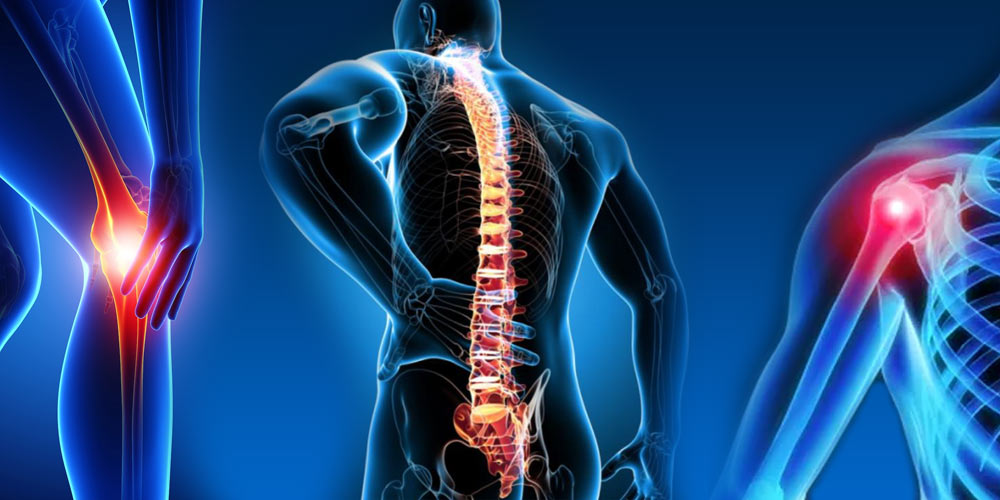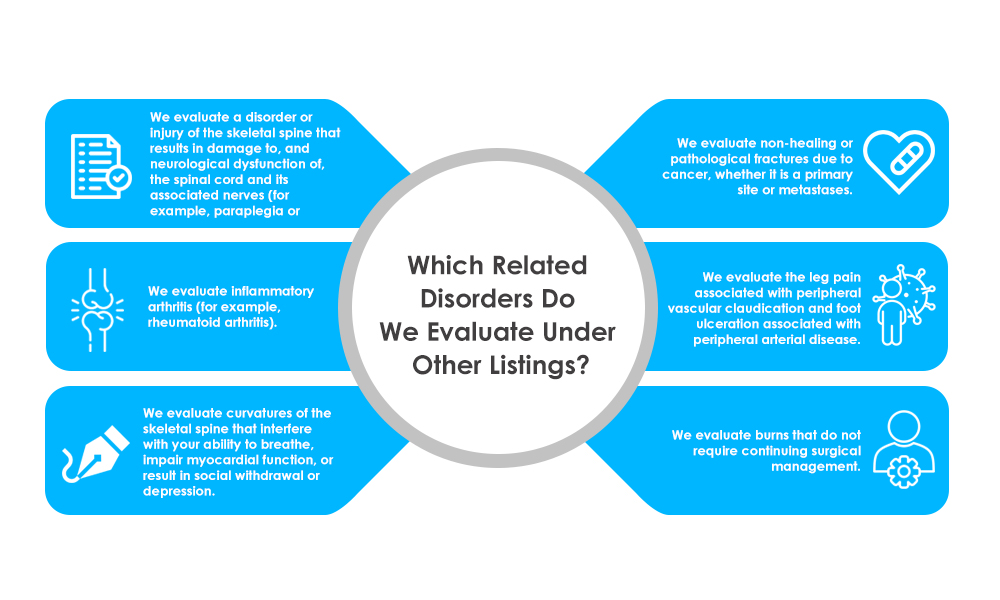
What Musculoskeletal Disorders Qualify For Social Security Disability Benefits?
Musculoskeletal disorders and Social Security Disability Benefits are possible for someone who cannot work due to this sort of problem. Did you know that many individuals suffering from musculoskeletal disorders may qualify for Social Security Disability benefits? It is true and a great deal of information about this disease can be found on the Social Security Administration’s website. Below are a few important pieces from the complete SSA list. Please note that “We” stands for the Social Security Administration.
Which Musculoskeletal Disorders Do We Evaluate Under These Listings?
- We evaluate disorders of the skeletal spine (vertebral column) or of the upper or lower extremities that affect musculoskeletal functioning under these listings. We use the term “skeletal” when we are referring to the structure of the bony skeleton. The skeletal spine refers to the bony structures, ligaments, and discs making up the spine. We refer to the skeletal spine in some musculoskeletal listings to differentiate it from the neurological spine. Musculoskeletal disorders may be congenital or acquired and may include deformities, amputations, or other abnormalities. These disorders may involve the bones or major joints; or the tendons, ligaments, muscles, or other soft tissues.
- We evaluate soft tissue injuries (including burns) or abnormalities that are under continuing surgical management. The injuries or abnormalities may affect any part of the body, including the face and skull.

Which Related Disorders Do We Evaluate Under Other Listings?
- We evaluate a disorder or injury of the skeletal spine that results in damage to, and neurological dysfunction of, the spinal cord and its associated nerves (for example, paraplegia or quadriplegia).
- We evaluate inflammatory arthritis (for example, rheumatoid arthritis).
- We evaluate curvatures of the skeletal spine that interfere with your ability to breathe, impair myocardial function, or result in social withdrawal or depression.
- We evaluate non-healing or pathological fractures due to cancer, whether it is a primary site or metastases.
- We evaluate the leg pain associated with peripheral vascular claudication and foot ulceration associated with peripheral arterial disease.
- We evaluate burns that do not require continuing surgical management.
What Evidence Do We Need To Evaluate Your Musculoskeletal Disorder?
- General. We need objective medical evidence from an acceptable medical source to establish that you have a medically determinable musculoskeletal disorder. We also need evidence from both medical and nonmedical sources, who can describe how you function, to assess the severity and duration of your musculoskeletal disorder. We will determine the extent and kinds of evidence we need from medical and nonmedical sources based on the individual facts about your disorder.
- Physical examination report(s). In the report(s) of your physical examination, we require a medical source’s detailed description of the orthopedic, neurologic, or other objective clinical findings appropriate to your specific musculoskeletal disorder from his or her direct observations during your physical examination. We will not accept a report of your statements about your symptoms and limitations in place of the medical source’s report of objective clinical findings. We will not use findings on imaging or other diagnostic tests as a substitute for findings on physical examination.
- When the medical source reports that a clinical test sign(s) is positive, unless we have evidence to the contrary, we will assume that he or she performed the test properly and accept the medical source’s interpretation of the test. For example, we will assume a straight-leg raising test was conducted properly (that is, in sitting and supine positions), even if the medical source does not specify the positions in which the test was performed.
- If you use an assistive device, the report must support the medical need for the device.
- If your musculoskeletal disorder causes a reduction in muscle strength, the report must document the measurement of the strength of the muscle(s) in question. The measurement should be based on a muscle strength grading system that is considered medically acceptable based on your age and impairments. Reduction in muscle strength is demonstrated by evidence that your muscle strength is less than the active range of motion (ROM) against gravity with maximum resistance. If the reduction in muscle strength involves one or both of your hands, the report must also document measurements of grip and pinch strength.
Do you think you might qualify for Social Security Disability benefits based on the information above? If so, please contact us at The Keener Law Firm today at 770-955-3000. We are the Social Security Disability experts and look forward to helping you get the benefits you have earned. Consultations are free and we don’t get paid unless you win your case.